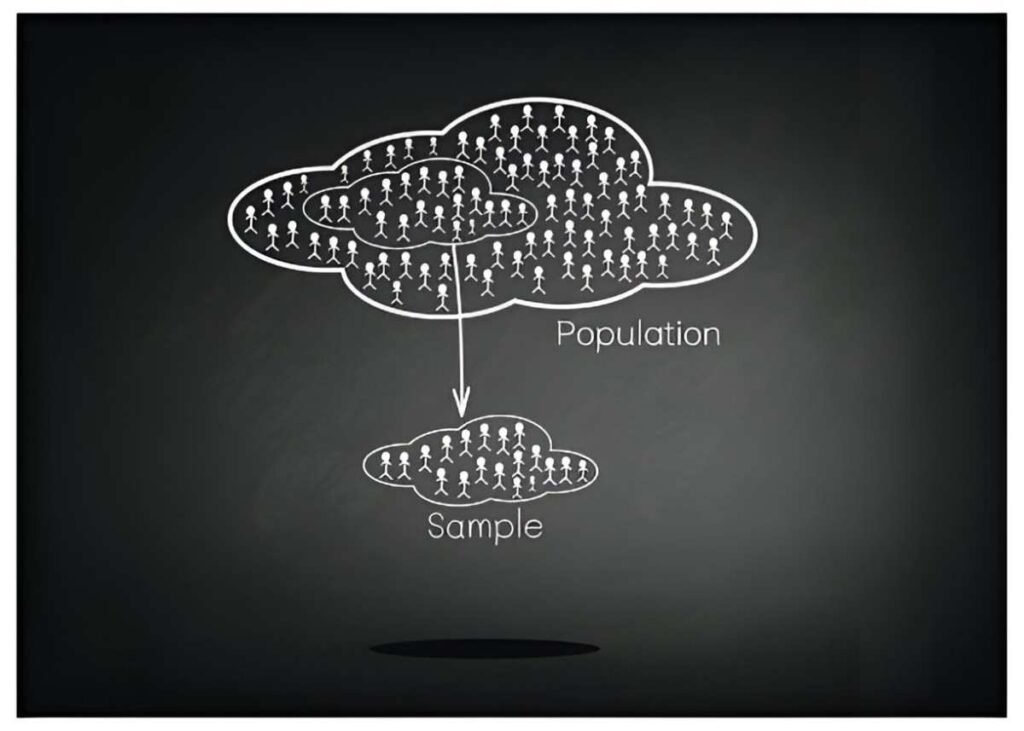Judgment sampling is a non-probability sampling technique where the researcher selects units to be sampled based on their own knowledge and judgment. This method relies on the expertise of the researcher to choose the most representative samples for the study.
Table of Contents
What is Judgment Sampling?
Judgment sampling, also known as purposive or subjective sampling, is a method where the researcher uses their own expertise to select a sample that they believe will provide the most useful information for the study. Unlike random sampling, where every member of the population has an equal chance of being selected, judgment sampling involves selecting specific individuals or units based on predefined criteria.
How Judgment Sampling Works
- Researcher’s Expertise: The effectiveness of judgment sampling relies heavily on the researcher’s knowledge and understanding of the population being studied. The researcher must be able to identify which individuals or units will provide the most relevant and reliable information.
- Criteria-Based Selection: The researcher establishes criteria for selecting the sample. These criteria are based on the research objectives and the characteristics that are most important for the study.
- Non-Random Selection: Unlike random sampling, judgment sampling does not give all members of the population an equal chance of being selected. The selection process is subjective and based on the researcher’s judgment.
Benefits of Judgment Sampling
- Focused Insights: Since the sample is chosen based on specific criteria, judgment sampling can provide deep, focused insights into particular aspects of the population that are most relevant to the study.
- Efficiency: Judgment sampling can be more efficient and less time-consuming than random sampling, especially when the researcher has a clear understanding of the population and the study objectives.
- Cost-Effective: By focusing on specific, relevant samples, judgment sampling can reduce the cost associated with collecting and analyzing data from a larger, randomly selected sample.
Challenges of Judgment Sampling
- Subjectivity: The primary drawback of judgment sampling is its reliance on the researcher’s subjective judgment, which can introduce bias into the sample selection process.
- Limited Generalizability: Because the sample is not randomly selected, the results of a judgment sample may not be generalizable to the entire population. The findings are specific to the selected sample and may not apply more broadly.
- Risk of Bias: The researcher’s biases and preconceived notions can influence the sample selection, potentially leading to skewed results that do not accurately reflect the population.
Real-World Example: Market Research
Imagine a company wants to launch a new product aimed at young professionals in a city. To understand their preferences and opinions, the company uses judgment sampling to select a group of young professionals who are known to be early adopters of new technology. The researcher chooses individuals who are active in tech communities, regularly attend industry events, and have a history of purchasing new gadgets. By focusing on this specific group, the company can gain valuable insights into how their target market might respond to the new product.
Conclusion
Judgment sampling is a useful method when the researcher has deep knowledge of the population and can identify specific individuals or units that are most likely to provide relevant and valuable information. While it offers efficiency and focused insights, the method also comes with challenges such as subjectivity and limited generalizability. Researchers must be cautious of potential biases and ensure that their judgment is well-informed and objective.
For those interested in learning more about sampling methods, “Research Methodology: A Step-by-Step Guide for Beginners” by Ranjit Kumar provides a comprehensive overview of different sampling techniques, including judgment sampling. Understanding these methods can help researchers design more effective and reliable studies.





